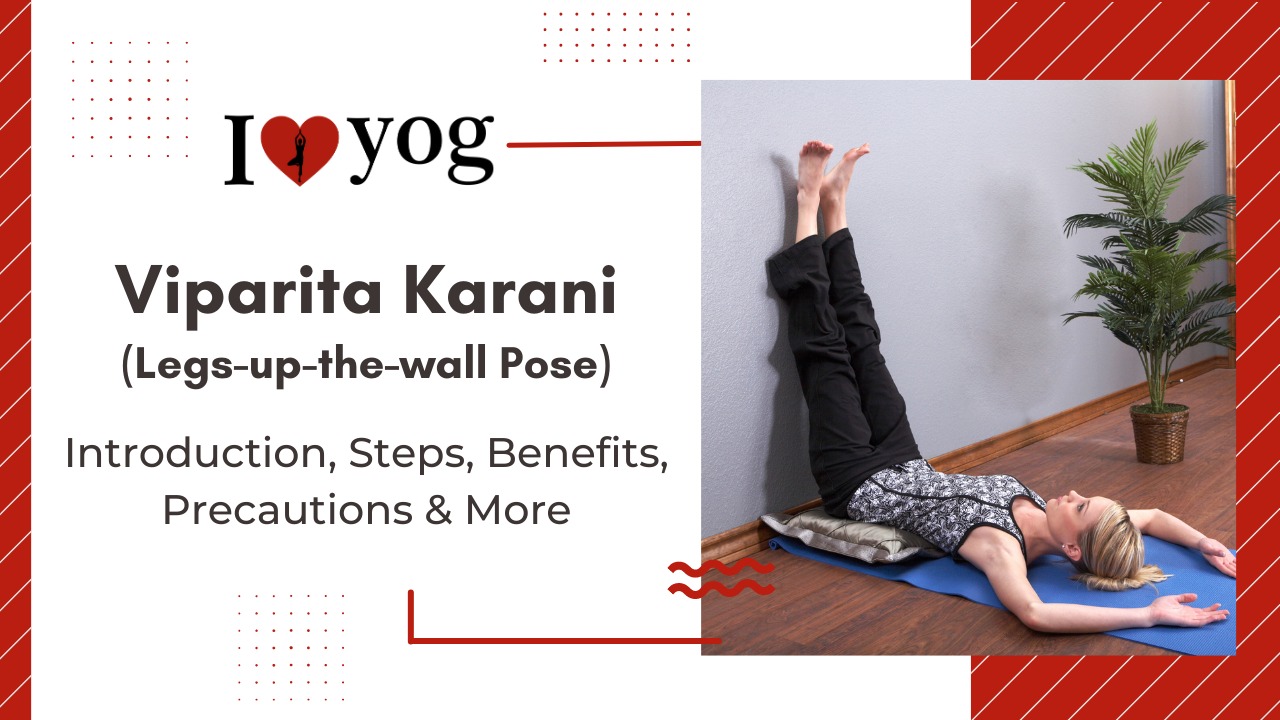What You Need to Know Prior to Performing Viparita Karani Asana?
The pose should be performed on an empty stomach in the morning.
Even if practised in the evening or at any other time of day, the stomach, bladder, and bowel should be empty.
If it is practiced at any other time of day outside the early morning, the practitioner should consume food 4 to 6 hours prior to practice. This will ensure that the stomach is empty by the time he or she assumes the posture, and the food’s energy will make the pose easier to perform.
Preparatory poses
- Setu bandha sarvangasana
- Supta baddha konasana
- Uttanasana
- Virasana
- Yogasana Level – Beginners
- Yogasana Style –
- Yogasana Repetitions –
- Yogasana Strengthens –
- Yogasana Stretches –
Tri dosha’s Effect to Viparita Karani Asana
It can be concluded from the benefits of this action that it has a balancing influence on prana vayu, udana vayu, and apana vayu.
How To Do Viparita Karani Yoga Posture/Asana?
- Sit on the floor with your left side against a flat wall and your feet on the ground.
- Slowly lower your back to the floor and place your feet against the wall in a flat position.
- Gently slide your body closer to the wall until your sit bones are against the wall and both of your legs are vertically above your hips.
- You can rest your head on the floor.
- Put your pelvis in a neutral position.
- Relax your face and neck, and place your hands on your stomach or on the floor next to you.
- Relax every part of your body while maintaining your legs against the wall.
- Remain in the position for 10 to 15 minutes, or as long as you feel comfortable.
Benefits Of Viparita Karani Yoga Posture/Asana?
- Deep relaxation
- Stress reduction
- Knee pain reduction
- Relieving tension in the neck
- Relieves weary legs
- Relaxes your thoughts
- Alleviates leg and foot cramping
- Alleviates backaches
- Gently unfolds the backs of your legs
- Provide sciatica pain alleviation
- Optimize thyroid function
- Relieve headache and migraine pain
- Improve vitality
- Reduce low back soreness and tightness
- Reduce leg and foot cramping
- Increase lymph flow
- manage varicose veins
- Gently stretch the backs of your legs to increase blood flow
- Relieve mild depression
- Enhance digestion
- Enhance sleep patterns
- Normalize blood pressure
Contraindications And Precautions With Regard To Viparita Karani Asana?
- In rare instances, Viparita Karani is contraindicated. Individuals with eye disorders such as glaucoma and retinal detachment should not invert.
- Those with hiatal hernias or heart issues should not either.
- Women should not perform inversions when menstruating.
- Backbends are contraindicated for individuals with spinal conditions such as spondylolisthesis or spondylolysis, and
- for women in their second and third trimesters of pregnancy.
Science Behind Viparita Karani Posture/Asana?
It is also possible with the aid of the wall. Consequently, it is also known as the Legs-up-the-Wall position or gesture.
The effect of this mudra is that all asanas exert a gravitational pull on the organs. In inverted asanas and mudras such as viparita karini, this impact is inverted. This will have remarkable health benefits. It is claimed to be particularly beneficial for piles and hydrocele sufferers.
In the Hatha Yoga Pradipika, this is referred to as a mudra. Gravity is utilised to direct energy or Kundalini upwards within the body.
Beginners Tips For Viparita Karani Posture/Asana?
If your legs feel as though they are splaying apart, wrap a strap over your shins or thighs (see variation below) to secure them at hip-distance apart.
Advanced Changes in Pose
Once you have mastered Legs-Up-the-Wall Pose, you may like to explore with variations.
Butterfly
In Butterfly Pose, you can place the soles of your feet together. Allow your feet to approach your hips while bending your knees. To increase the stretch, press your hands softly into your thighs.
Alternatively, allow your feet to spread out in a wide-legged position. This stretch will be felt in the hips and inner thighs.
Thread the Needle
- Try the Thread the Needle modification for a deep hip opening.
To accomplish this:
- Bend your right knee and position your outer ankle directly above your left knee on the bottom of your left leg.
- Bend your left knee slowly and press your left foot against the wall.
- Reduce your left foot until your shin is perpendicular to the floor.
- Right hip and thigh will feel stretched.
- Maintain this position for one to five minutes.
- Repeat on the reverse side.
Related Yoga Poses/Asanas –
- Continued postures
- Shavasana
- Pranayama
Reference:


